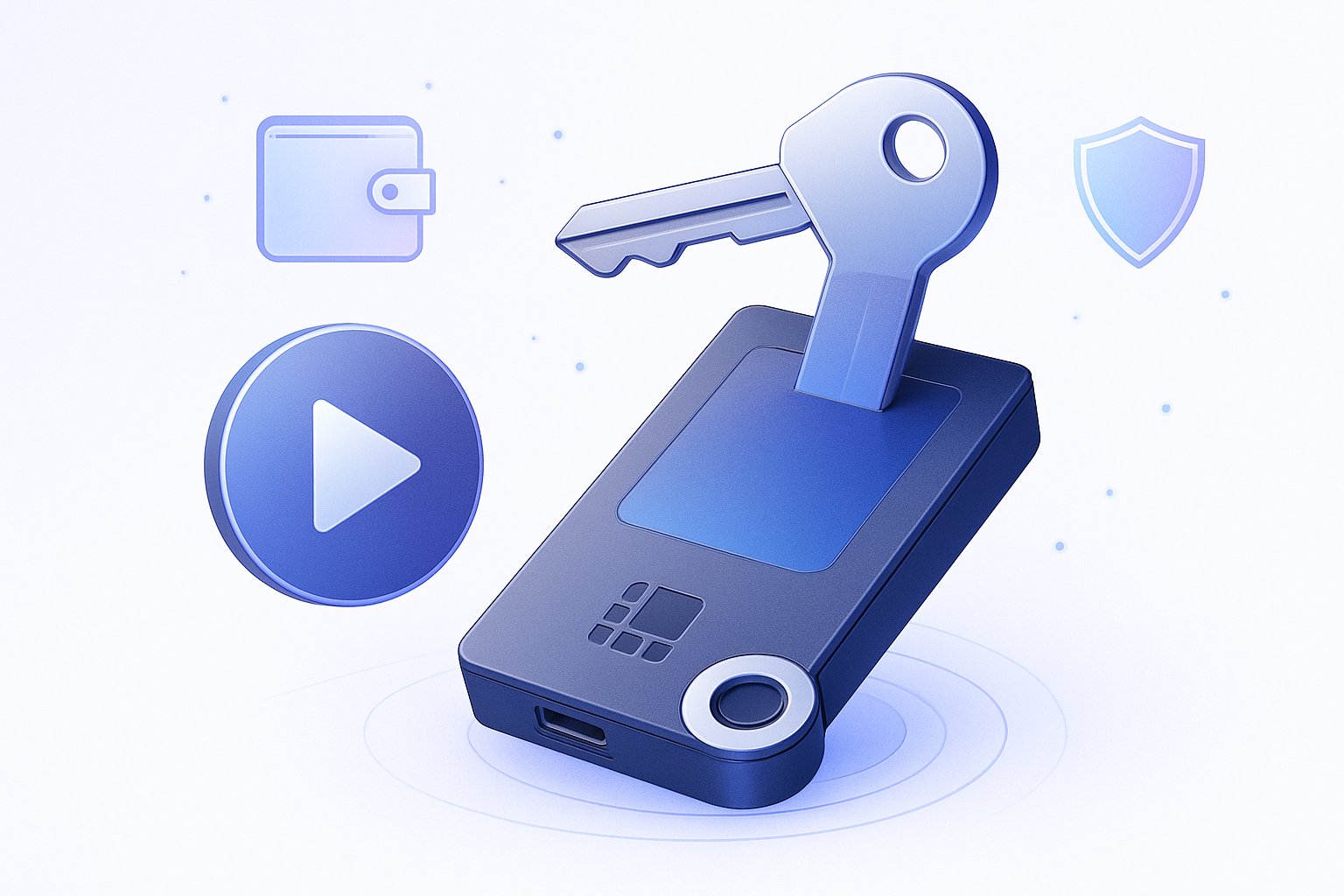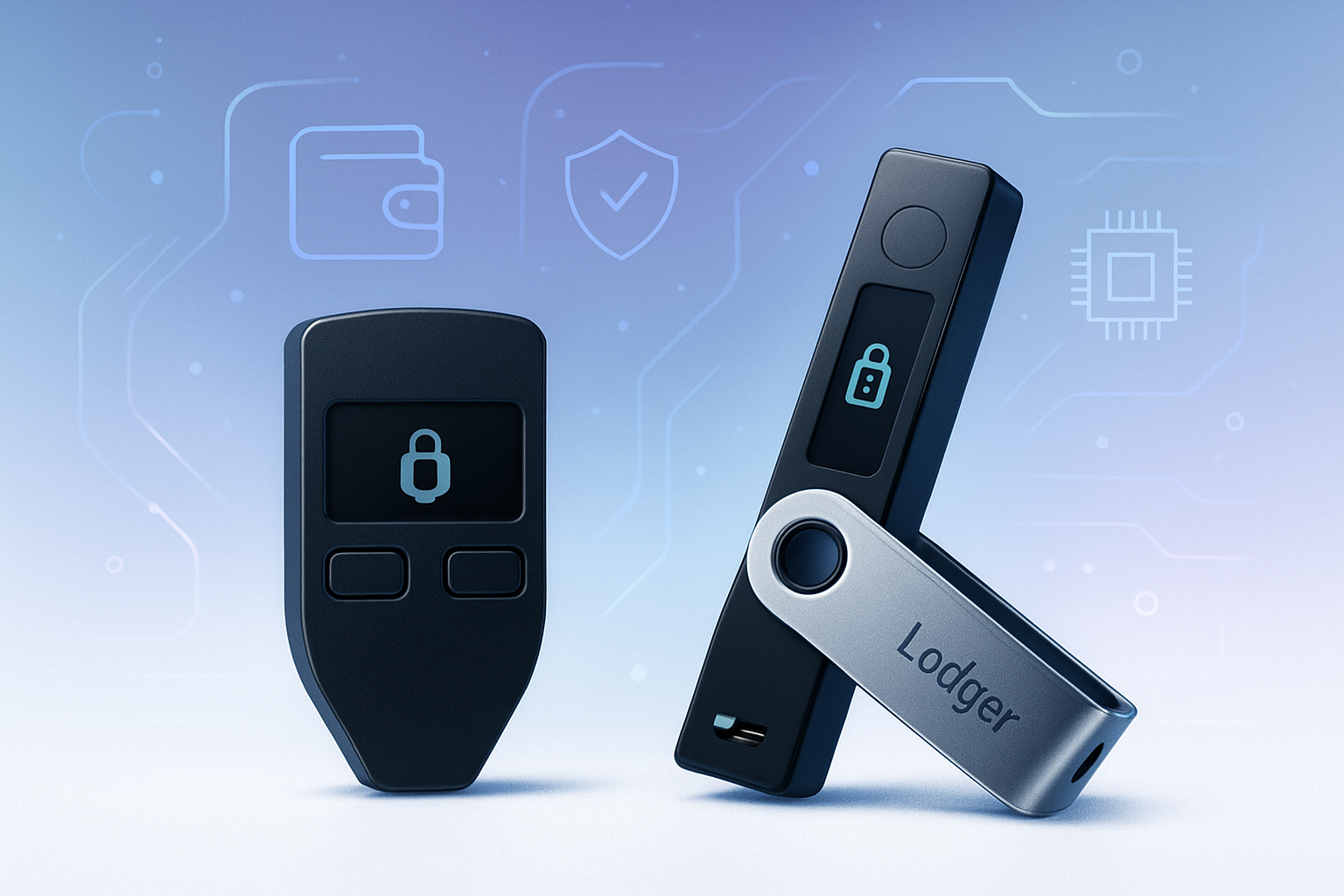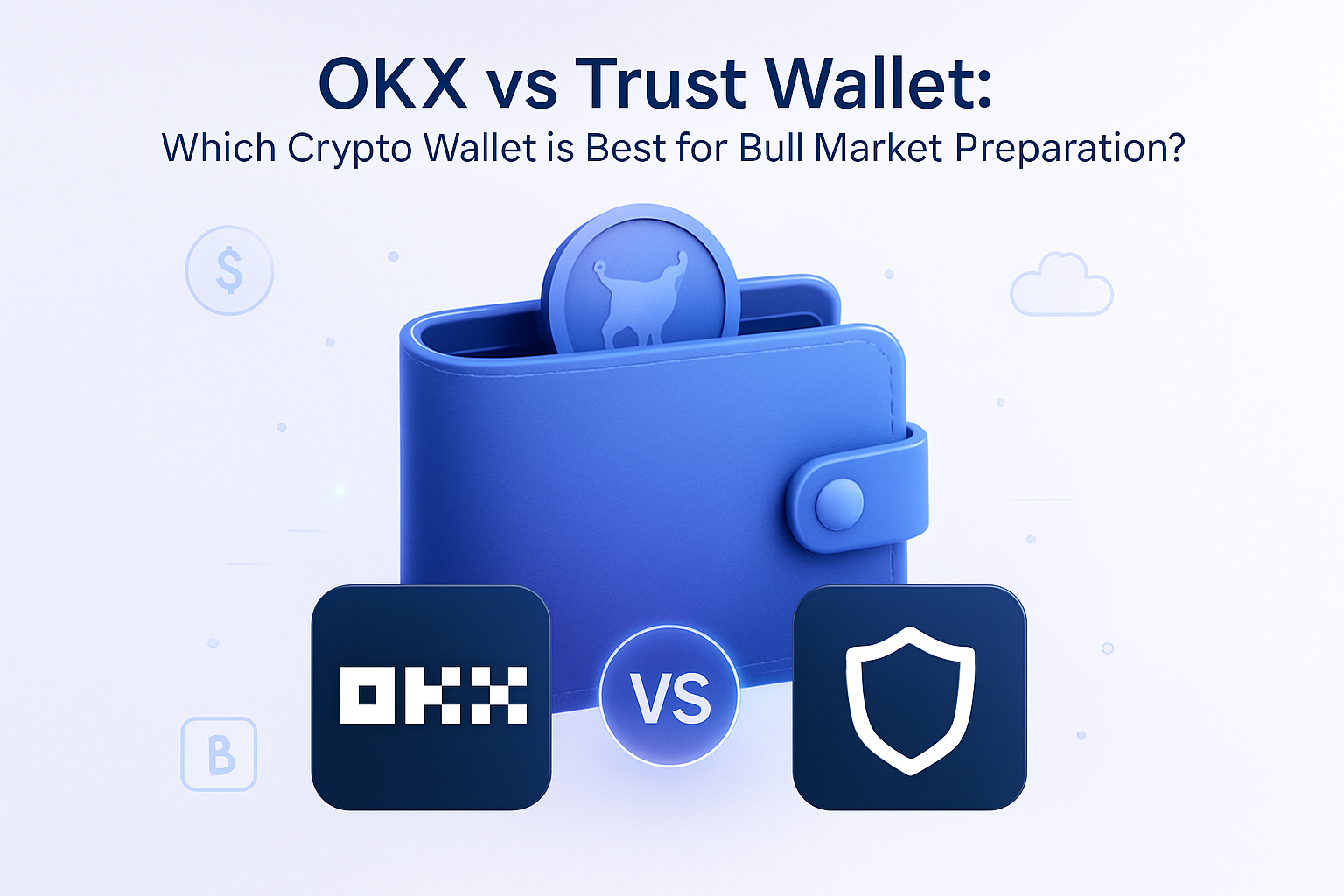With Bitcoin now trading at $107, 598 as of June 29, 2025, the stakes for secure self-custody have never been higher. As digital asset prices soar, so does the sophistication of attacks targeting crypto holders. If you’re serious about safeguarding your Bitcoin, your choice of wallet is critical. Two names dominate the conversation in 2025: Ledger Nano X, a hardware cold wallet, and MetaMask, a popular software hot wallet. This guide dissects their security features and real-world usability to help you make an informed decision.
Ledger Nano X: Cold Storage Security for High-Value Bitcoin
The Ledger Nano X remains one of the most trusted hardware wallets on the market in 2025. Its primary advantage is offline private key storage – your keys are kept on a Secure Element chip (CC EAL5 and certified), physically isolated from internet threats. Even if your computer is compromised by malware or phishing schemes, your Ledger-protected Bitcoin is insulated from remote theft.
This device supports over 5, 500 cryptocurrencies through the Ledger Live app and integrates with DeFi platforms via Bluetooth and USB connections. Enhanced usability features like a touchscreen and improved mobile support are now standard on newer models. However, security comes at a cost: expect to pay between $79 and $399 depending on the model and retailer.
Key strengths:
- Offline cold storage: Immune to most online attacks and phishing attempts.
- Secure Element chip: Hardware-level protection against physical tampering.
- No exposure during transactions: Private keys never leave the device.
If you prioritize maximum protection for substantial Bitcoin holdings – especially with BTC above $100K – Ledger Nano X should be your default choice.

MetaMask: Hot Wallet Convenience With Security Tradeoffs
MetaMask, originally designed for Ethereum and EVM-compatible chains, has become ubiquitous in DeFi circles due to its browser extension and mobile app formats. It lets users interact seamlessly with dApps and manage assets across multiple blockchains from one interface.
Your MetaMask private keys are encrypted locally on your device rather than stored by a third party, giving you full control – but also full responsibility. Since MetaMask is always online (a “hot” wallet), it’s inherently more exposed to phishing attacks, browser vulnerabilities, and malware than any hardware solution.
- User-friendly interface: Easy onboarding for new users entering DeFi or NFT markets.
- No hardware required: Free to use – just install and go.
- Lacks native Bitcoin support: Managing BTC requires workarounds or third-party bridges that introduce extra risk layers.
- Read more about MetaMask’s cross-chain features here.
If you’re actively trading or interacting with decentralized applications daily, MetaMask offers unmatched flexibility – but it demands constant vigilance against scams such as fake sync requests or malicious browser plugins.
Comparing Security Models: Cold vs Hot Wallets in 2025
The core distinction between Ledger Nano X and MetaMask boils down to attack surface area. Ledger’s cold storage keeps private keys offline at all times; MetaMask’s hot storage exposes them whenever your device is connected to the internet. Recent Reddit threads highlight ongoing risks for both wallets – scammers target MetaMask users with fake validation prompts while Ledger users must beware of supply chain tampering or social engineering attacks during setup (source).
Ledger Nano X vs MetaMask: Security Pros & Cons (2025)
-

Ledger Nano X: • Cold storage hardware wallet—keeps private keys offline, minimizing online hack risks. • Utilizes Secure Element chips (CC EAL5+ certified) for advanced protection against physical and digital attacks. • Highly recommended for long-term Bitcoin storage, especially with BTC trading at $107,598 (as of June 29, 2025). • Requires a one-time purchase (typically $149–$199), and physical possession for transactions. • Bluetooth and touchscreen features add usability, but device loss or damage can hinder access. • Not immune to phishing—never “sync” or “validate” your wallet on suspicious sites. • Recent security enhancements after the 2020 data breach (no private keys or funds were lost).
-

MetaMask: • Hot wallet (software)—private keys are encrypted and stored locally, but always connected to the internet. • Free, open-source, and user-friendly for accessing dApps and DeFi platforms. • Supports Ethereum and EVM chains; Bitcoin support is limited and requires extra steps or third-party services. • More vulnerable to phishing, malware, and device compromise than hardware wallets. • Best for frequent transactions and active DeFi use, but not ideal for storing large Bitcoin holdings at $107,598. • Convenience comes at the cost of increased security risk—users must remain vigilant against scams and keep devices secure.
If you’re holding significant amounts of Bitcoin in today’s high-value environment, using a cold wallet like Ledger Nano X isn’t just recommended – it’s essential self-defense against modern threats.
Best Practices: Maximizing Security With Ledger Nano X and MetaMask
Regardless of which wallet you choose, your daily habits determine your real-world security. For Ledger Nano X users, never enter your recovery phrase on any website or computer; only use the device’s built-in interface for recovery. Store your seed phrase offline, preferably in a fireproof, waterproof location, and consider using a metal backup. Always buy hardware wallets directly from the manufacturer or an authorized reseller to avoid supply chain attacks.
For MetaMask, vigilance is non-negotiable. Bookmark official MetaMask URLs and inspect every browser extension update for authenticity. Never “sync” your wallet with any third-party site, and be suspicious of pop-ups or requests to re-enter your seed phrase. Use a dedicated device for crypto activity if possible, keep your operating system and antivirus updated, and enable hardware wallet integration within MetaMask when possible for higher-value transactions.
Who Should Choose What? Ledger Nano X vs MetaMask For Bitcoin Self-Custody
If you’re holding Bitcoin as a long-term investment, especially with BTC at $107, 598: the Ledger Nano X is the clear winner for peace of mind. Its cold storage architecture is purpose-built for minimizing attack vectors and keeping your private keys away from prying eyes. The up-front cost is justified by the level of protection you gain, especially as the value of your holdings rises.
MetaMask, on the other hand, is best suited to users who need rapid access to DeFi protocols or frequently interact with multiple blockchains, but this comes at the expense of exposure to online threats. If you must use MetaMask for Bitcoin (via wrapped tokens or bridges), limit these balances to what you can afford to lose and periodically sweep profits into a cold wallet like Ledger Nano X.
Ledger Nano X vs MetaMask: 2025 Side-by-Side Feature & Security Comparison
| Feature/Security Aspect | Ledger Nano X (Hardware Wallet) | MetaMask (Software Wallet) |
|---|---|---|
| Type | Hardware (Cold Wallet) | Software (Hot Wallet) |
| Primary Use | Long-term, secure storage of Bitcoin and other cryptocurrencies | Convenient access to dApps, DeFi, and EVM-compatible assets |
| Supported Assets | 5,500+ cryptocurrencies including Bitcoin, Ethereum, and more | Primarily Ethereum & EVM chains; requires extra steps for Bitcoin |
| Private Key Storage | Offline, on Secure Element chip (CC EAL5+ certified) | Locally encrypted on user device (browser/mobile) |
| Internet Connectivity | No (except for firmware/app updates); Bluetooth for device management | Always online (browser extension/mobile app) |
| Security Level | Very high (cold storage, resistant to hacking/theft) | Moderate (susceptible to phishing/malware) |
| Notable Security Features | Secure Element chip, PIN protection, physical confirmation required for transactions | Password protection, seed phrase backup, phishing warnings |
| Device Requirement | Physical device required for transactions | No extra device needed; runs on existing hardware |
| Bitcoin Support | Native, seamless support via Ledger Live | No native support; requires third-party bridges or custom setup |
| Ease of Use | Requires setup and physical device; user-friendly app | Very easy to set up and use for EVM assets |
| Cost | One-time purchase ($149–$199 for Nano X) | Free |
| Best For | Maximum security, large/long-term Bitcoin holdings | Active trading, DeFi, and NFT users |
| Recent Security Incidents | 2020 customer data breach (no funds lost); security improved since | Ongoing phishing/scam risks; user vigilance required |
| Recommended Use Case | Cold storage for significant Bitcoin holdings at current BTC price ($107,598) | Frequent dApp/DeFi access; not ideal for large Bitcoin storage |
Expert Tip: Combine Both For Layered Security
The most robust approach in 2025 remains combining both solutions: store the bulk of your Bitcoin on a Ledger Nano X, while using MetaMask (preferably linked to hardware) only for active trading or DeFi exposure. This hybrid strategy lets you benefit from both cold storage security and hot wallet flexibility without exposing all assets to online risks.
If it’s not your key, it’s not your coin. If it’s not offline, it’s not truly safe.
Final Thoughts: Stay Ahead Of Evolving Threats in 2025
The crypto landscape continues to evolve rapidly alongside prices, Bitcoin holding above $100K brings new incentives for attackers and new responsibilities for self-custody enthusiasts. Whether you choose Ledger Nano X, MetaMask, or both, prioritize operational security every step of the way.
If you’re serious about protecting generational wealth in digital assets, don’t cut corners on wallet choice or setup diligence. With strong habits and proven tools like Ledger Nano X, and careful use of software wallets like MetaMask, you’ll be positioned to defend against even the most sophisticated threats targeting crypto holders in 2025.




